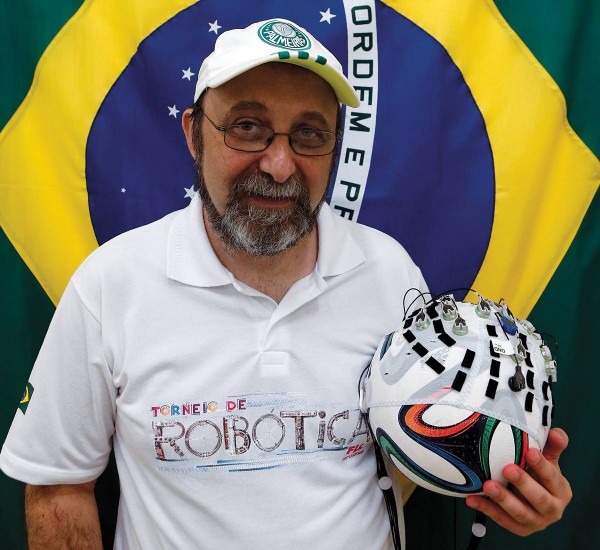
Robohub.org
Exclusive Q&A: World cup kickoff looms for demo of brain-controlled machine | Science

During the World Cup next week, there may be 1 minute during the opening ceremony when the boisterous stadium crowd in São Paulo falls silent: when a paraplegic young person wearing a brain-controlled, robotic exoskeleton attempts to rise from a wheelchair, walk several steps, and kick a soccer ball. The neuroscientist behind the planned event, Miguel Nicolelis, is familiar with the spotlight. His lab at Duke University in Durham, North Carolina, pioneered brain-computer interfaces, using surgically implanted electrodes to read neural signals that can control robotic arms.
As his team prepares for the 12 June kick, Nicolelis gives Science a hint of the technology under the hood, and defends his decision to arrange such a conspicuous debut for a tool still in the early stages of development.
Read more by Kelly Servick on Science
If you liked this article, you may also be interested in:
- Exoskeleton with haptic sensors helps paralysed man to kick off World Cup
- Chess, Jeopardy and now… Ping Pong? Kuka robot goes up against table tennis champion Timo Boll
- Packbot: Serving the Military and World Cup Football
- Rehab robots, smart prostheses and exoskeletons to reach $1.8 billion by 2020
- Ekso Bionics goes public for $20.6 million
See all the latest robotics news on Robohub, or sign up for our weekly newsletter.
tags: BMI, Brain-Machine Interface, c-Research-Innovation, cx-Events, cx-Health-Medicine, exoskeleton


